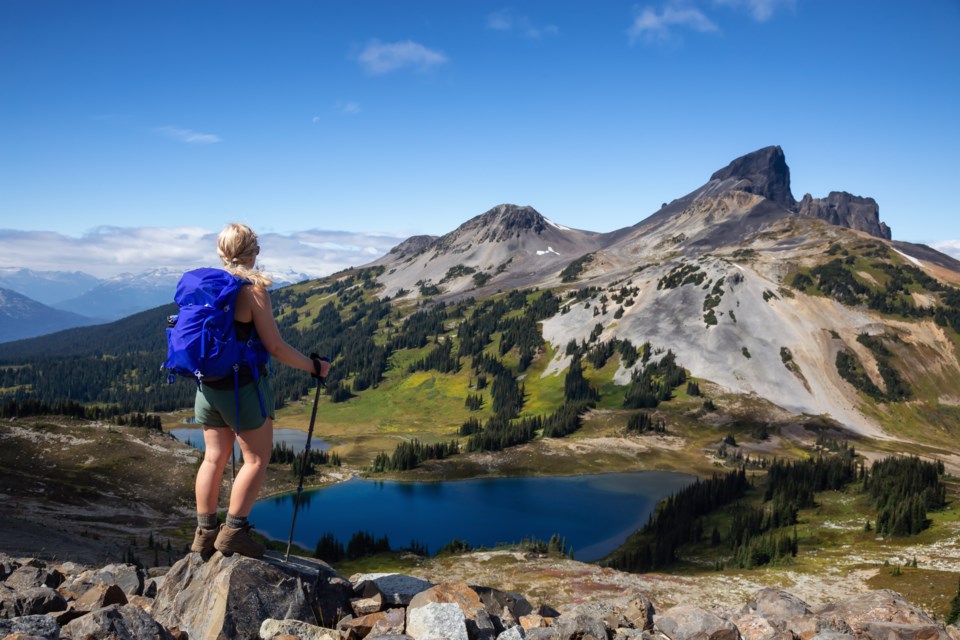1,960 search and rescue calls.
That’s how many emergencies occurred throughout the province in 2024, with the Sea to Sky Corridor seeing a disproportionate number of those events—everything from drownings to hiking mishaps, mountain biking crashes and free-climbing snafus.
Saturday, Squamish Search and Rescue posted that it "had been a very busy week."
With all these incidents in mind, BC Adventure Smart’s Sandra Riches has five tips for staying safe during your adventures in the outdoors.
Tip 1
Proper preparation comes down to three Ts.
“These are three Ts that, when outdoor enthusiasts follow them, they can have successful outcomes,” Riches told the Squamish Chief.
The first T is trip planning, which entails setting goals for the trip, creating a detailed trip plan and then sharing it with an emergency contact. Adventurers should ensure everyone on the trip is on the same page, the buddy system is in place, and goals are well articulated.
The second T is training for your activity, which can mean ensuring you’re physically fit before embarking on a long hike, practicing your paddle strokes before an aquatic trek, or practising on a climbing wall before taking on a cliff face.
The third T is taking the essentials, which means everything from communication devices to a First Aid kit (which you’ve taken the time to learn how to use) as well as sunscreen, food and water and activity-specific items like prescription sunglasses.
Tip number 2
The acronym to remember in an emergency is STOP. That means you need to stop, think, observe and plan.
When an emergency arises, you may be tempted to try to move to a better spot or navigate your way out of the scenario yourself. This is exactly the opposite of what search and rescue wants you to do, as it can delay response times and make the situation worse.
“You’ll be found faster and in better condition if you just stay put,” said Riches.
The next part of the acronym involves assessing your situation and deciding the best course forward. This may include conversations within the group about who's in charge of certain courses of action, like communication or shelter.
Then you need to observe your surroundings and plan for how to stay safe while waiting for emergency crews to arrive, using the essentials you carried with you. This will ensure the severity of the situation is minimized and doesn’t get worse.
Tip 3
9-1-1. There’s no other number.
“We want to remind everyone that the number for search and rescue is 9-1-1. There’s no special number for the Sea to Sky or Squamish. If you’re in trouble, everyone needs to call 9-1-1 as soon as possible,” said Riches.
No matter where you are in the province, 9-1-1 will route you through local police or RCMP agencies, who will then alert search and rescue.
Tip 4
You will never get charged for being rescued, no matter what.
“No matter the severity of your situation, no matter where you need help from, there is absolutely no charge to you or your family or the friends who call for you,” said Riches.
“You don’t need to worry about calling for help, because if you hesitate, that may delay response time, which can delay the time of their reaching you and the severity of the call. So just call.”
Tip 5
The fifth tip is to connect with BC Adventure Smart—the organization hosts webinars, lead programs and even has an app, YouTube videos and a website.
“We’re celebrating our 20th anniversary this year, and we’re the reliable resource for outdoor education in the province of B.C. The whole focus is to enhance enthusiasts’ experience so we can reduce the impact on search and rescue,” said Riches.
“The Sea to Sky Corridor is one of the busiest areas for search and rescue in the province, and we’re here to support everybody.”
For more information on outdoor safety programs or upcoming webinars from BC AdventureSmart, visit the organization's website.





